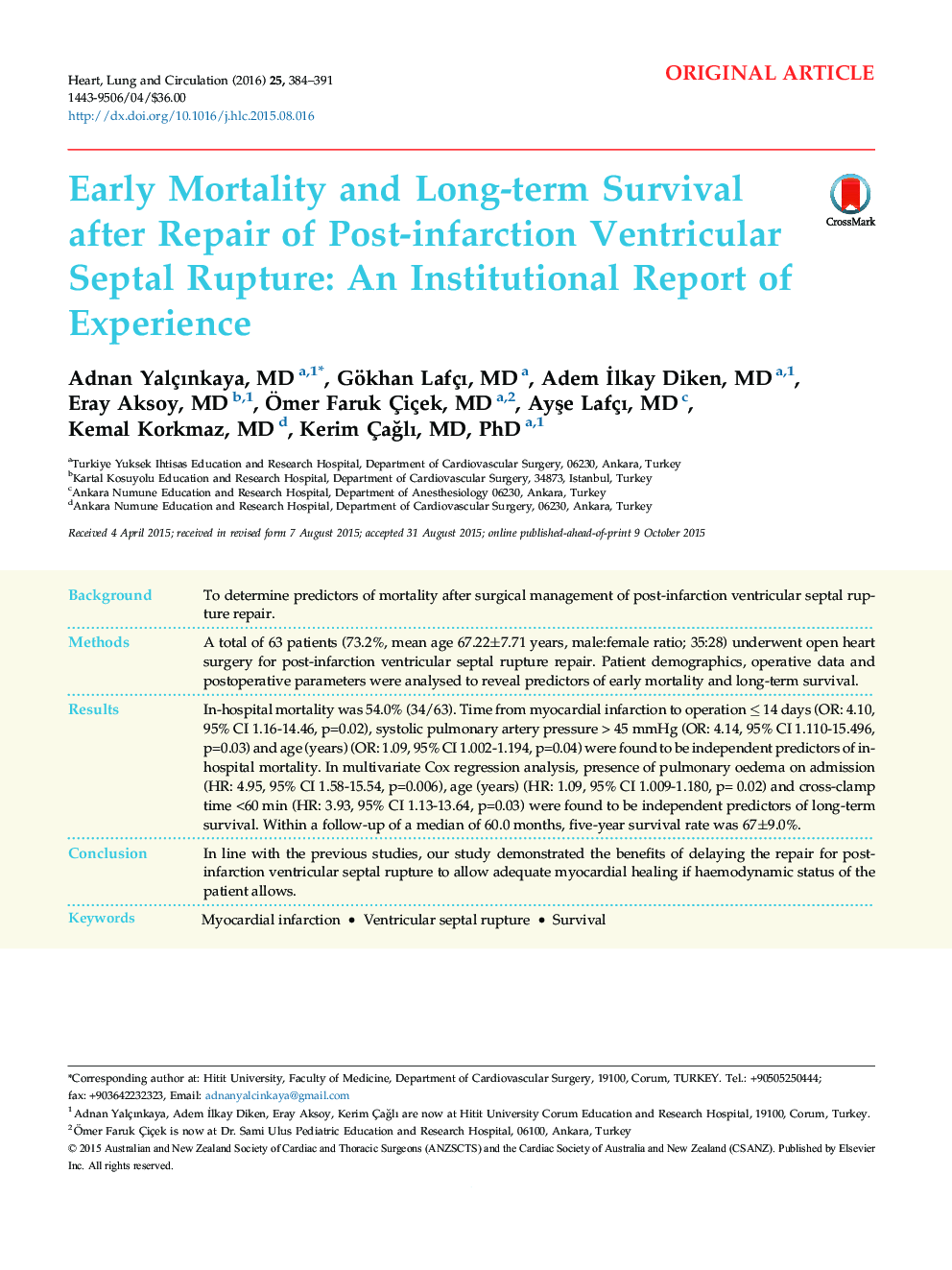| Article ID | Journal | Published Year | Pages | File Type |
|---|---|---|---|---|
| 2916818 | Heart, Lung and Circulation | 2016 | 8 Pages |
BackgroundTo determine predictors of mortality after surgical management of post-infarction ventricular septal rupture repair.MethodsA total of 63 patients (73.2%, mean age 67.22±7.71 years, male:female ratio; 35:28) underwent open heart surgery for post-infarction ventricular septal rupture repair. Patient demographics, operative data and postoperative parameters were analysed to reveal predictors of early mortality and long-term survival.ResultsIn-hospital mortality was 54.0% (34/63). Time from myocardial infarction to operation ≤ 14 days (OR: 4.10, 95% CI 1.16-14.46, p=0.02), systolic pulmonary artery pressure > 45 mmHg (OR: 4.14, 95% CI 1.110-15.496, p=0.03) and age (years) (OR: 1.09, 95% CI 1.002-1.194, p=0.04) were found to be independent predictors of in-hospital mortality. In multivariate Cox regression analysis, presence of pulmonary oedema on admission (HR: 4.95, 95% CI 1.58-15.54, p=0.006), age (years) (HR: 1.09, 95% CI 1.009-1.180, p= 0.02) and cross-clamp time <60 min (HR: 3.93, 95% CI 1.13-13.64, p=0.03) were found to be independent predictors of long-term survival. Within a follow-up of a median of 60.0 months, five-year survival rate was 67±9.0%.ConclusionIn line with the previous studies, our study demonstrated the benefits of delaying the repair for post-infarction ventricular septal rupture to allow adequate myocardial healing if haemodynamic status of the patient allows.
